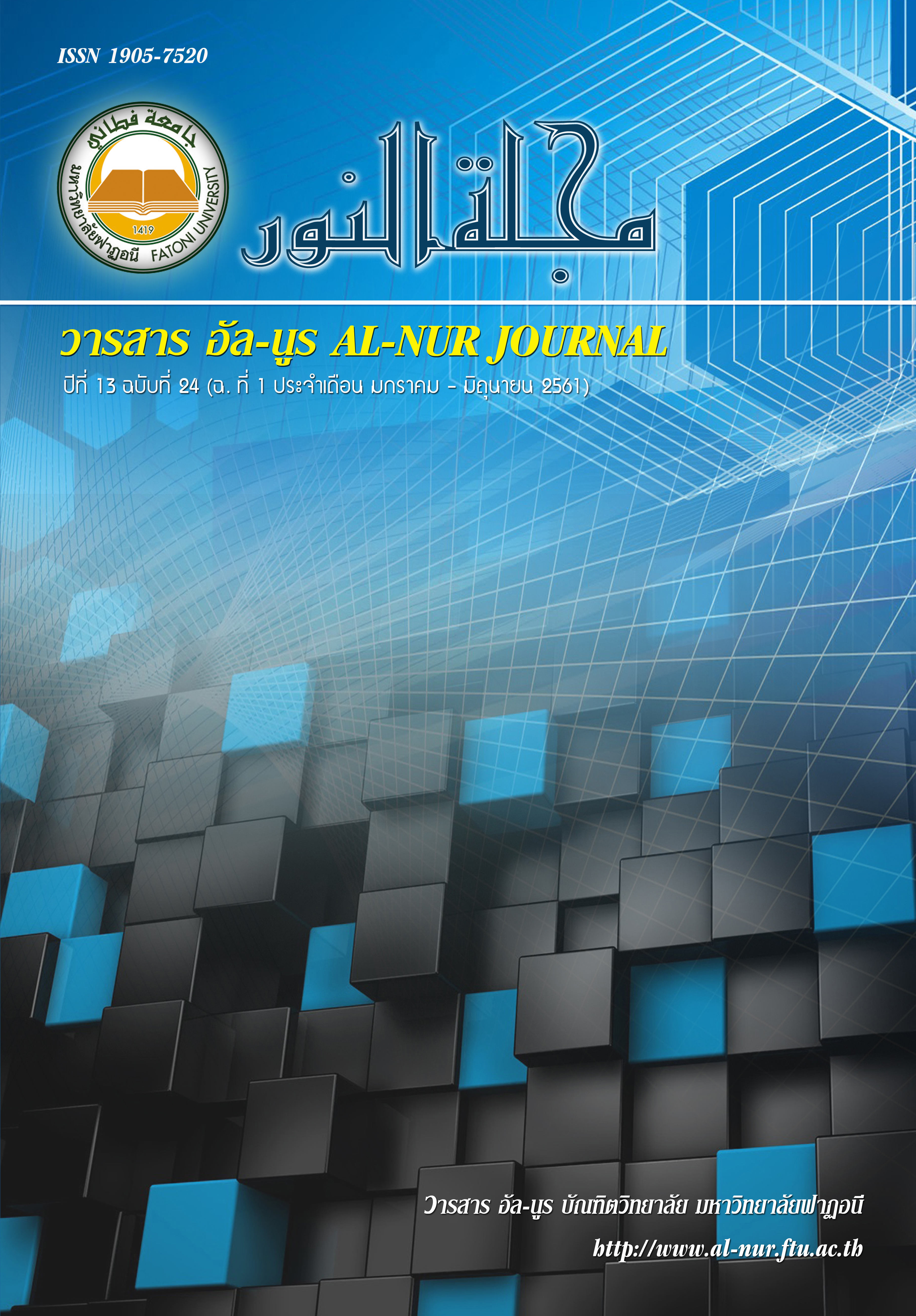Using Content-Based Instruction to Improve Students’ English Writing
Keywords:
Content-Based Instruction(CBI),, writing skillsAbstract
The objectives of this research were : 1) to study the use of Content-Based Instruction (CBI) to improve students’ English writing skills, and 2) to examine the students’ motivational aspects towards the use of CBI to improve their English writing skills. The population of the study was Matthayomsuksa 4 students who were studying Fundamental English (ENG 31101) in the first semester of the Academic Year 2014 at Hatyai wittayalai School, Hatyai, Songkhla. The researcher selected fifty students as the sample group by using a cluster sampling technique. The research instruments used for data collection were : 1) a test of writing was used both as pre-test and post-test. 2) Writing tasks for CBI. 3) Writing skills Assessment was used to evaluate students’ writing tasks. 4) Lesson plans were designed for the use of CBI to improve their English writing skills. 5) The Motivation Questionnaires. The total time of class was 20 hours, 10 weeks.
The results of the study were as follows : The use of CBI to improve students’ English writing skills was higher efficiency than the standard criterion set of 80/80 with 81.76/81.35 at the statistical significance at level .05. The overall of students’ motivation towards the use of CBI to improve students’ English writing skills was at high degree.
References
Baayan Parkmaruk. (2002). The Effects of using a content-based teaching model on students' development of writing ability. Master’s thesis Master of Education. Mahasarakham : Mahasarakham University.
Birjandi, P. (2010). “The role of self-assessment in promoting Iranian EFL learners’Motivation,” English Language Teaching Journal. 3(3), 211 - 220.
Chastain, K. (1988). Developing second language skills: Theory and Practice. University of Virginia.
Elbow, P. (1973). Writing in the Disciplines. NewYork : Oxford University Press.
Harmer, Jeremy. (2004). How to teach Writing. London : Longman.
Hedge, T. (1988). Writing. Oxford : Oxford University Press.
Jacob et al. (1981). Testing ESL Composition : A Practical Approach. Massachsetts : Newbury House Publisher.
Khwanchit Suwannoppharat and Atima KaewSa-ard. (2010). Effectiveness of Content-Based Instruction in Developing Academic Reading and Writing Skills at Tertiary Level. Research report. Chiang Rai : Mae Fah Luang University
Laksmi, E.D. (2006). “Scaffolding : Students’ Writing in EFL Class,” TEFLIN(Teaching English as a Foreign Language in Indonesia) Journal. 17(2), 144-156.
Liao, M., & Wong, C. (2010). “Effects of dialogue journals on L2 students’ writing fluency, reflections, anxiety, and motivation,” Journal of Reflections on English Language Teaching. 9(2), 139-170.
Malee Devakul Na Ayudhya. (2007). Environment Content-Based Instruction to Promote English Reading and Writing Abilities and Conservation Awareness of Beginner Level Students . Master’s thesis Master of Education. Chiang Mai : Chiang Mai University.
Ministry of Education. (2008). Basic Education Curriculum 2008. Bangkok : teachers’ council Publishing, Ladprao.
Nopmanee Rittikulsithichai. (2011). The Development of an English Instructional Model Using the Content-Based and the Task-based Instruction to Enhance English Reading Comprehension Ability and Task Performance of Engineering Students. Doctoral dissertation Doctor of Philosophy in Curriculum and Instruction. Bangkok : Chulalogkorn University.
Orasri Wiriyakul . (2011). A Study of English learning cchievement of MattayomSuksa 5 students through Content-based Instruction (CBI). Master’s thesis Master of Art. UbonRatchathani : UbonRatchathaniRajabhat University.
Pailin Kanjanapanupan. (2002). Content-Based Instruction : The Development of English Language Instruction for Secondary School. Doctoral dissertation Doctor of Philosophy in Curriculum and Instruction. Bangkok : Kasetsart University.
Pairo Narasri. (2007). Development the English writing skills using both process and product strategies. Master’s thesis Master of Arts. Uttaradit : Uttaradit Rajabhat University.
Pissamai Khunchai. (2012). Building motivation and english writing abilities by using local content based lesson plans, Phanomphrai Wittayakarn School, Phanomphrai District, Roi-Et Province. Master’s thesis Master of Education. Bangkok : North Bangkok University.
Raimes, Ann. (1983). Techniques in Teaching Writing. New York : Oxford.
Ratchanee Singkhachan. (2005). The Use of a content-based teaching model to improve students' speaking skill. Master’s thesis Master of Education. Mahasarakham : Mahasarakham University.
Saikae Suppakitjumnong. (2006). Content-Based Instruction to enhance English Academic reading ability and motivation of science and technology students at Chiang Mai University. Master’s thesis Master of Education. Chiang Mai : Chiang Mai University.
Sarah Paul. (2014). Writing Rubrics. Retrieved November 26, 2014,
from http://www.snippetsbysarah.blogspot.com
Siripen Chanputsa. (2004). The Use of content-based instruction to develop students's communicative skills. Master of Education. Mahasarakham : Mahasarakham University.
Stahl, S.A. (2005). “Four problems with teaching word meanings (and what to do to make vocabulary an integral part of instruction,” E.H. Hiebert and M.L. Kamil (eds.), Teaching and learning vocabulary: Bringing research to practice. Mahwah, New Jersey: Erlbaum Press.
Tompkins, G. E. (1994). Teaching Writing : Balancing Process and Product. New York : Merrill Publishing
Company.Tuan, L. T. (2010). “Enhancing EFL learners’ writing skill via journal writing,” Journal of English Language Teaching. 3(3), 81-88. Retrieved November 26, 2014,
from http://www.ccsenet.org/journal/index.php/elt/article/view/7217
Watchalee Kulprasit. (2012). Impact of Journal Writing with Peer Feedback on EFL Students’ Writing Ability. Master’s thesis Master of Arts. Songkhla : Prince of Songkhla University
Weigle, S.C. (2002). Assessing Writing. Cambridge : Cambridge University Press.
Zhang , X. and Chen, J. (1989). The techniques to teaching writing. European Journal of Humanities and Social Sciences , 27(2), 34-36. Retrieved November 23, 2014, from http://eujournal.org/
index.php/esj/ article/download/429/578



